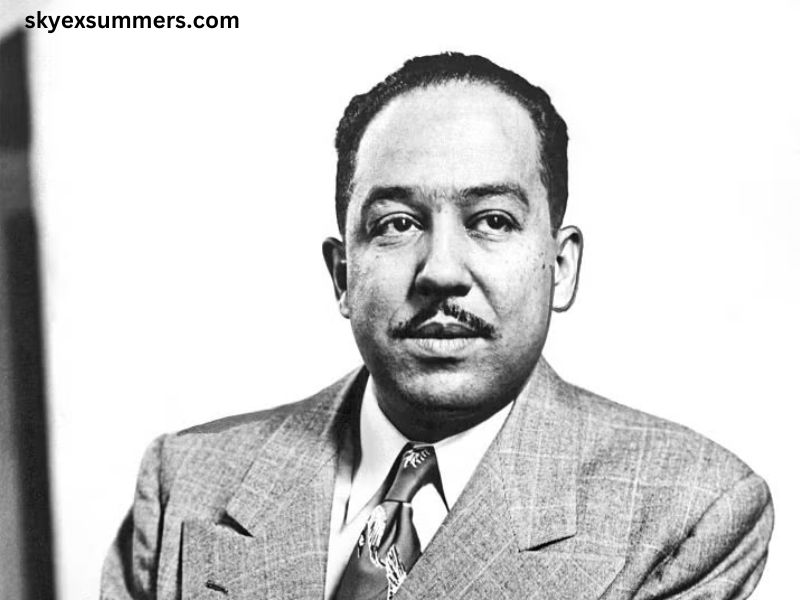Certainly! To provide a thorough exploration of the figure of speech that Hughes primarily uses in his poetry, let’s consider the works of Langston Hughes, a prominent figure of the Harlem Renaissance. Hughes is known for his evocative and powerful use of various figures of speech, but one of the most prominent figures he employs is imagery.
The Power of Imagery in Langston Hughes’ Poetry
Langston Hughes, a leading voice in American literature, is renowned for his vivid and evocative use of imagery in his poetry. Imagery, the use of descriptive language that appeals to the senses, plays a crucial role in Hughes’ work, allowing him to convey complex emotions, cultural experiences, and social commentary. This article explores how Hughes primarily utilizes imagery to enhance his poetry, providing insight into its significance and impact.
1. Understanding Imagery
Imagery is a literary device that involves the use of descriptive language to create vivid pictures in the reader’s mind. It appeals to the senses—sight, sound, smell, taste, and touch—and helps readers to experience the text more fully. Through imagery, poets can evoke emotions, paint scenes, and provide a sensory experience that deepens the reader’s connection to the poem.
2. Hughes’ Use of Imagery in His Poetry
Langston Hughes’ poetry is rich with imagery, which serves several purposes. It reflects his cultural heritage, personal experiences, and social commentary. Hughes’ imagery often draws from the African American experience, portraying the beauty, struggle, and resilience of Black life.
a. Cultural and Historical Imagery
One of Hughes’ most famous poems, “The Negro Speaks of Rivers,” is a prime example of his use of imagery. In this poem, Hughes connects African American identity with rivers, drawing a historical and cultural lineage that stretches back to ancient civilizations. The imagery of rivers evokes a sense of continuity and depth, linking the Black experience in America to a broader historical context.
“I’ve known rivers: I’ve known rivers ancient as the world and older than the flow of human blood in human veins.”
Here, the imagery of ancient rivers not only evokes a sense of timelessness but also symbolizes the deep, enduring nature of African American heritage. The rivers serve as a metaphor for the flow of history and experience, emphasizing the connection between past and present.
b. Social and Political Commentary
Hughes also uses imagery to critique social and political issues. In “Harlem” (also known as “A Dream Deferred”), Hughes uses vivid imagery to explore the theme of deferred dreams and the consequences of unfulfilled aspirations.
“What happens to a dream deferred? Does it dry up like a raisin in the sun?”
The imagery of a raisin drying up in the sun is a powerful metaphor for dreams that are postponed or denied. This image conveys a sense of decay and loss, highlighting the impact of systemic racism and socio-economic obstacles on the aspirations of African Americans.
In “Let America Be America Again,” Hughes employs imagery to contrast the idealized vision of America with the harsh reality experienced by marginalized communities.
“O, let America be America again— The land that never has been yet— And yet must be—the land where every man is free.”
The imagery here evokes a vision of an idealized America that remains unfulfilled. Hughes contrasts this with the reality faced by many, using imagery to expose the gap between the American dream and the lived experience of those who are oppressed.
c. Personal Experience and Reflection
In “Mother to Son,” Hughes uses imagery to reflect on personal experience and generational struggle. The poem features a mother speaking to her son, using the metaphor of a staircase to symbolize life’s struggles and perseverance.
“Well, son, I’ll tell you: Life for me ain’t been no crystal stair. It’s had tacks in it, And splinters, And boards torn up, And places with no carpet on the floor— Bare.”
The imagery of the staircase, with its tacks, splinters, and bare spots, conveys the hardships and obstacles the mother has faced. This metaphor not only reflects the mother’s personal journey but also serves as a broader commentary on the struggles faced by African Americans. The vivid, tactile imagery helps to convey the emotional weight of her experiences and advice.
3. The Impact of Imagery in Hughes’ Poetry
Hughes’ use of imagery is instrumental in creating a powerful emotional and sensory impact. By appealing to the senses and painting vivid pictures, Hughes allows readers to experience the world through his eyes, gaining a deeper understanding of the themes and emotions he explores.
a. Evoking Empathy and Connection
Imagery helps to evoke empathy and connection between the reader and the subjects of Hughes’ poems. By providing concrete, sensory details, Hughes makes abstract concepts and emotions more accessible. Readers are drawn into the poem’s world and are more likely to connect with the experiences and perspectives depicted.
b. Enhancing Themes and Messages
Imagery also enhances the themes and messages in Hughes’ poetry. Whether exploring cultural heritage, social injustice, or personal struggle, the vivid images Hughes creates help to underscore the significance of his themes. The sensory details make the poems’ messages more compelling and memorable, reinforcing the impact of his social and political commentary.
c. Reflecting Hughes’ Style and Voice
The use of imagery is a defining characteristic of Hughes’ poetic style. His ability to craft vivid and evocative images contributes to his distinct voice and artistic expression. Through imagery, Hughes communicates his unique perspective on the African American experience and contributes to the rich tradition of American poetry.
Conclusion
Langston Hughes’ poetry is characterized by its powerful use of imagery, which serves as a primary figure of speech throughout his work. Through vivid and evocative descriptions, Hughes creates a sensory experience that enhances the themes, emotions, and messages in his poems. His use of imagery reflects his cultural heritage, personal experiences, and social commentary, making his poetry a rich and impactful exploration of the African American experience. As readers engage with Hughes’ imagery, they gain a deeper understanding of his work and the world he portrays, highlighting the enduring power of this literary device in his poetry.



